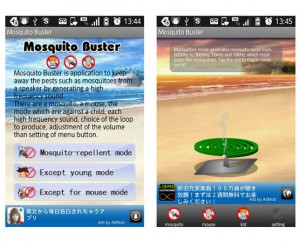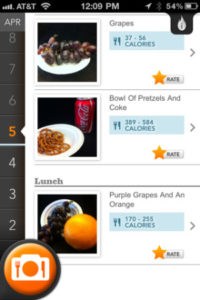Melinda Tang, MEng, is a software developer for the Innovation Acceleration Program at Children’s Hospital Boston. This post is the first of a series highlighting fun and helpful mobile health applications and other interesting apps that developers in health care can learn from.
With more than 1 million mobile apps available today, there’s no doubt that mobile devices are changing the way we operate. With the push of a button or tap of a screen, we can turn our smartphones from entertainment consoles to travel guides to personal health monitors. One report estimates that a half billion people will be using mobile health apps by 2015.
Here are a few interesting examples I shared with the Mobile Apps working group at Children’s Hospital Boston, to inform our growing cadre of app developers and other health-IT-minded folks. These apps provide innovative solutions to problems you may never have thought your cell phone could solve — and in ways you might not have expected.
 Mosquito Buster is an extremely simple app that lets you use your phone to replace standard mosquito repellants such as sprays and candles. Turn on the app, and your phone will emit a high-frequency pitch that is inaudible to humans but drives mosquitoes crazy enough to stay away. Solution to mosquito-borne diseases?
Mosquito Buster is an extremely simple app that lets you use your phone to replace standard mosquito repellants such as sprays and candles. Turn on the app, and your phone will emit a high-frequency pitch that is inaudible to humans but drives mosquitoes crazy enough to stay away. Solution to mosquito-borne diseases?
 Meal Snap, one of the latest apps from DailyBurn‘s health and fitness platform, makes calorie-counting easy and somewhat magical. Use your phone to snap a picture of any food or drink, and the system will automatically identify and provide the estimated caloric breakdown of your meal. I’m inclined to believe there aren’t any advanced image processing algorithms involved here, but rather that the photos are analyzed by a team of nutritionists somewhere, ready at any moment to judge our eating habits. Either way, it’s an impressive and useful way to manage your daily health. Maybe it could help counter the obesity epidemic.
Meal Snap, one of the latest apps from DailyBurn‘s health and fitness platform, makes calorie-counting easy and somewhat magical. Use your phone to snap a picture of any food or drink, and the system will automatically identify and provide the estimated caloric breakdown of your meal. I’m inclined to believe there aren’t any advanced image processing algorithms involved here, but rather that the photos are analyzed by a team of nutritionists somewhere, ready at any moment to judge our eating habits. Either way, it’s an impressive and useful way to manage your daily health. Maybe it could help counter the obesity epidemic.
ePetri, a “small, lens-free microscopy imaging platform” developed by engineers at Caltech, isn’t exactly a mobile app, but it does utilize smartphone features in a novel way. This “smart” petri dish consists of a smartphone, a cell phone image sensor chip and Legos. You can place a cell culture on the image sensor on top of the phone, then place the entire device in an incubator.
Instead of researchers having to repeatedly remove samples from the incubator and study them under a microscope, ePetri uses the phone’s image sensor to take frequent pictures of the culture in the incubator as it grows in real time, and sends the data to a laptop to be analyzed. The phone’s LED screen acts as a scanning light source. This lightweight and relatively inexpensive device could transform how lab work is conducted, cutting hands-on labor and minimizing the risk that a culture will become contaminated.
From the simple and silly to the brilliantly engineered, these are just a few of the many creative ideas that have come out of mobile development today. What are your favorite mobile apps?








